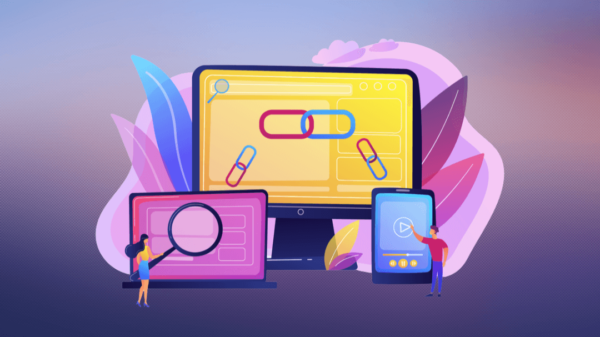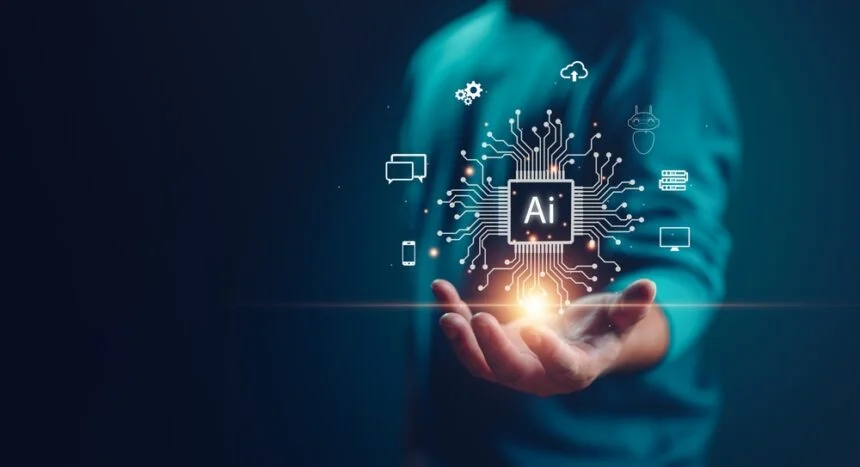Introduction: Generative AI’s Rise
Generative AI has rapidly emerged as one of the most transformative technologies of the digital age. From creating realistic images and videos to composing music and writing code, it is redefining how we interact with machines. Unlike traditional AI systems that rely on rule-based algorithms, generative AI can produce new content by learning from vast amounts of data. This ability to generate original, human-like outputs has sparked innovation across industries, making generative AI a key player in areas like entertainment, healthcare, and customer service. As the technology evolves, its potential to revolutionize creative processes and decision-making is just beginning to unfold.
Current Landscape of Generative AI
Generative AI has made significant strides in recent years, becoming a driving force behind innovations in various fields. Its current landscape is dominated by advancements in natural language processing (NLP), image generation, and deep learning models like GPT (Generative Pre-trained Transformer) and GANs (Generative Adversarial Networks). Companies are leveraging these technologies for everything from automated content creation and virtual assistants to personalized marketing and product design.
AI-generated content is becoming more prevalent in media, art, and entertainment, while in healthcare, it is used for drug discovery, medical imaging, and personalized treatment plans. Industries like finance and retail are also adopting AI to enhance customer experiences and streamline operations. As generative AI continues to grow, its integration into everyday applications is becoming more seamless, setting the stage for widespread adoption and continued innovation.
Key Trends Shaping Generative AI
Generative AI is evolving rapidly, influencing various sectors and setting the stage for groundbreaking innovations. Generative AI services are at the forefront of this transformation, leveraging advanced algorithms to create new content and enhance various applications. Below are some of the key trends that are shaping the future of generative AI:
1. AI in Creative Industries
Generative AI is transforming the creative landscape by enabling machines to produce art, music, design, and content that was once the exclusive domain of human creativity. Tools like DALL-E for image creation and ChatGPT for writing are allowing creators to push the boundaries of artistic expression. In the fashion industry, AI is being used to design unique clothing patterns and styles. In gaming and filmmaking, AI-generated graphics and characters are enhancing storytelling and world-building.
Music composition has also seen a shift, with AI systems generating background scores and even entire tracks. This ability to co-create with AI allows artists to explore new creative avenues and accelerate the production process. AI in creative industries is not about replacing human artists but amplifying their capabilities, providing them with new tools to innovate.
2. Advancements in Natural Language Processing
Natural Language Processing (NLP) is at the core of generative AI’s capabilities, particularly in models like GPT. These advancements enable machines to understand, generate, and respond to human language with increasing accuracy and nuance. Generative AI models have become more proficient in tasks such as translating languages, answering questions, summarizing texts, and even writing entire articles, stories, and reports.
Recent developments like GPT-4 and beyond have enhanced the ability of AI to produce coherent, contextually accurate, and human-like text. These models are used in customer service chatbots, virtual assistants, and content generation platforms. NLP advancements are also empowering AI systems to understand and analyze large amounts of unstructured data, enabling businesses to derive insights from customer interactions, feedback, and social media.
3. Healthcare Revolution with AI
Generative AI is poised to revolutionize healthcare by facilitating personalized treatments, speeding up drug discovery, and enhancing diagnostic accuracy. AI models can analyze complex medical data, such as genetic sequences or medical images, to identify patterns that humans might miss. In drug discovery, AI is helping researchers to predict how new compounds will behave, cutting down on the time and cost associated with developing new medications.
Generative AI’s ability to simulate medical scenarios is being used to train healthcare professionals in virtual environments. It’s also creating individualized treatment plans based on patients’ unique medical histories and conditions. As healthcare becomes more data-driven, generative AI is enabling a more proactive and personalized approach to patient care, leading to better outcomes and cost savings for healthcare providers.
4. AI-Driven Automation
Generative AI is driving the next wave of automation, moving beyond repetitive tasks to automating complex, creative processes. AI systems are increasingly being used to design products, write marketing copy, and even develop software code. In industries like manufacturing and logistics, generative AI optimizes supply chains by predicting demand, automating inventory management, and reducing waste.
Businesses are using generative AI to automate customer interactions through AI-driven chatbots and virtual agents that can handle more complex inquiries with less human intervention. In finance, AI systems are automating processes such as fraud detection, financial reporting, and even creating personalized investment strategies. This AI-driven automation is helping companies improve efficiency, reduce operational costs, and enhance decision-making across the board.
Ethics and Regulation in Generative AI
As generative AI becomes more widespread, it raises critical ethical concerns and regulatory challenges that must be addressed to ensure responsible development and use. The ability of AI systems to create convincing human-like content, including text, images, and videos, has sparked debates over issues like misinformation, bias, privacy, and accountability.
1. Misinformation and Deepfakes
One of the major ethical concerns is the potential for generative AI to be used in creating deepfakes—highly realistic but fake content. These can be manipulated to spread false information, defame individuals, or distort political processes. The rise of AI-generated content has made it increasingly difficult to distinguish between real and fake media, posing risks to public trust and societal stability. Regulating the creation and distribution of deepfakes is a pressing challenge for policymakers.
2. Bias and Fairness in AI
Generative AI models are trained on vast amounts of data, which can introduce biases if the data is not carefully curated. These biases may reflect societal prejudices related to gender, race, or other characteristics, leading to unfair or harmful outcomes. For example, biased AI systems can generate content that perpetuates stereotypes or excludes certain groups.
Ensuring fairness in generative AI requires developers to be transparent about their training data and actively work to identify and mitigate biases. Regulatory frameworks should promote diversity in datasets and require AI systems to be regularly audited for fairness.
3. Data Privacy and Security
Generative AI often relies on large datasets that may include sensitive or personal information, raising concerns about privacy and data security. There is a risk that AI systems could inadvertently expose private details or be used to reconstruct personal information without consent. This has led to growing calls for stronger data protection regulations and ethical standards governing how AI systems handle user data.
Governments and organizations need to establish clear guidelines for data usage, consent, and storage to protect individuals’ privacy in AI-driven environments.
4. Accountability and Transparency
A major challenge in regulating generative AI is determining accountability when things go wrong. If an AI system generates harmful content, who is responsible—the developer, the company using the system, or the AI itself? Establishing accountability is crucial to ensure that AI systems are used ethically and responsibly.
Transparency is also key to building public trust. AI developers and companies must be clear about how their systems work, what data they use, and how decisions are made. This includes the development of explainable AI models that allow users to understand the reasoning behind AI-generated outputs.
5. Global Regulatory Efforts
Countries and international organizations are starting to develop frameworks to regulate generative AI. The European Union’s AI Act is one of the most comprehensive regulatory efforts, aiming to categorize AI systems based on their level of risk and impose specific requirements on high-risk systems. Other nations, including the U.S. and China, are also exploring ways to regulate AI, though their approaches may vary.
Global cooperation will be essential to create harmonized standards for AI ethics and regulation, especially as generative AI transcends borders and impacts global industries.
Impact on Jobs and the Workforce
Generative AI is expected to significantly impact jobs and the workforce, both positively and negatively. On one hand, AI can automate routine and repetitive tasks, increasing efficiency and allowing workers to focus on more strategic and creative roles. Industries like customer service, manufacturing, and content creation are already seeing AI-driven tools augmenting human efforts, improving productivity, and reducing costs. However, this shift also raises concerns about job displacement, particularly for roles that are highly susceptible to automation, such as data entry, administrative support, and certain creative professions.
While AI may replace some jobs, it also has the potential to create new opportunities in AI development, data analysis, and AI-human collaboration roles. Workers will need to upskill and reskill to adapt to an AI-driven economy, emphasizing the importance of continuous learning and education. Governments and organizations must focus on workforce development strategies, including retraining programs, to help employees transition into new roles and thrive in the evolving job landscape. The key challenge lies in balancing the benefits of AI-driven productivity with the need to protect and empower the human workforce.
Predictions for Generative AI’s Next Decade
Industry-Wide AI Innovation
- Generative AI will become integral across industries, driving product innovation and design.
- AI-generated content and models will be widely adopted in media, entertainment, and marketing for personalization and efficiency.
- Healthcare will see breakthroughs in drug discovery, personalized treatments, and AI-driven diagnostics.
- In manufacturing, AI will streamline processes, optimize supply chains, and enable smart factories.
- Financial services will use AI for fraud detection, algorithmic trading, and tailored investment strategies.
- Retail and e-commerce will leverage AI for hyper-personalized shopping experiences and dynamic pricing models.
Human-AI Collaboration
- AI will augment human creativity, helping professionals in design, art, writing, and music create faster and more efficiently.
- Workers in various fields will increasingly collaborate with AI to solve complex problems, from scientific research to engineering.
- Human-AI teams will become common in fields like customer service, where AI handles routine queries and humans manage more complex interactions.
- AI will assist decision-making processes by providing predictive insights and data-driven recommendations.
- New roles and professions will emerge that focus on managing, training, and overseeing AI systems.
- Ethical frameworks and AI governance roles will rise, ensuring safe and responsible AI use.
Generative AI in Everyday Life
- Generative AI is gradually becoming a part of our daily routines, influencing how we work, communicate, and consume information. In personal technology, AI-powered virtual assistants like Siri and Alexa use natural language processing to help with tasks such as setting reminders, answering questions, and controlling smart home devices. AI-generated content is also reshaping social media and entertainment, with platforms recommending personalized videos, articles, and music based on user preferences.
- In education, generative AI is creating personalized learning experiences, tailoring study materials, and even grading assignments. In healthcare, AI is providing personalized health advice, helping monitor chronic conditions, and facilitating virtual consultations. E-commerce platforms use AI to offer tailored product suggestions, while customer service bots handle queries and troubleshoot issues in real-time.
- As generative AI continues to advance, its role in simplifying tasks, enhancing user experiences, and offering personalized services will expand, making it an even more integral part of everyday life.
Conclusion: The Future Powered by AI
Generative AI is not just a technological advancement; it is reshaping industries, transforming everyday experiences, and redefining the boundaries of human potential. As AI continues to evolve, its impact will grow even more profound, driving innovation across sectors such as healthcare, education, entertainment, and beyond. The collaboration between humans and AI promises to unlock new levels of creativity, efficiency, and problem-solving abilities, leading to advancements we have yet to fully imagine.
However, with this rapid growth comes the responsibility to address ethical concerns and regulate its use carefully. Ensuring fairness, transparency, and accountability in AI development will be crucial as it becomes more embedded in our lives. As we look to the future, generative AI holds the promise of empowering humanity in unprecedented ways, shaping a world where intelligent systems enhance human capabilities and drive progress across all domains.




























































